DIRAC 7.3, together with the new MA25 microphone array simplify and speed up diffraction measurements following the EN 1793-4 and EN 16272-4 standards.

Introduction
The MA25 array complements the Zircon V2 hardware. It holds 5 microphones (which can be re-used from the MA24 array) and is connected directly to the CI24 control unit. This immediately results in a five times reduction of the total measurement time. The new TH24 tilt head for the LS24 loudspeaker allows the source to be pointed to the top of the barrier. In addition to the MA25 array and TH24 tilt head, the complete Zircon V2 system now includes extender tubes that allow the LS24 and MA25 to be positioned at heights up to 4 m.
New functions in Dirac 7.3 enable the calculation of the Diffraction Index DI, from 20 impulse responses (4 LS24 positions and 2 MA25 positions). Two sets of measurements, with and without the added device, can be used by Dirac to calculate the Single-number rating of sound diffraction index difference DLΔDI.
In situ diffraction measurements using the MA25
The EN 1793-4 and EN 16272-4 standards define 4 source positions (S1..S4) and 10 receiver positions (R1..R10). Dirac can capture 20 source-receiver combinations (S1-R1..R5, S2-R1..R5, S3-R6..R10 and S4-R6..R10) in 4 measurements using the MA25 array. These measurements have to be performed in 3 setups: a reference measurement without NRD, a measurement with the NRD but without the added device on top of the NRD, and a measurement with the added device on top of the NRD. A complete measurement therefore results in 3 x 20 impulse responses.
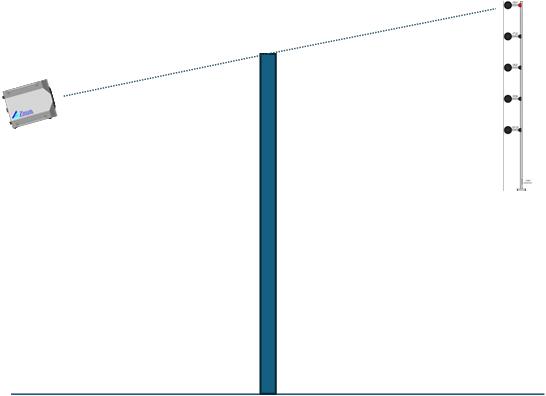
Zircon/diffraction processing in Dirac
In Dirac, the impulse responses are collected in 3 groups, reference measurements without NRD, diffraction measurement without added device, and diffraction measurements with added device on top of the NRD.
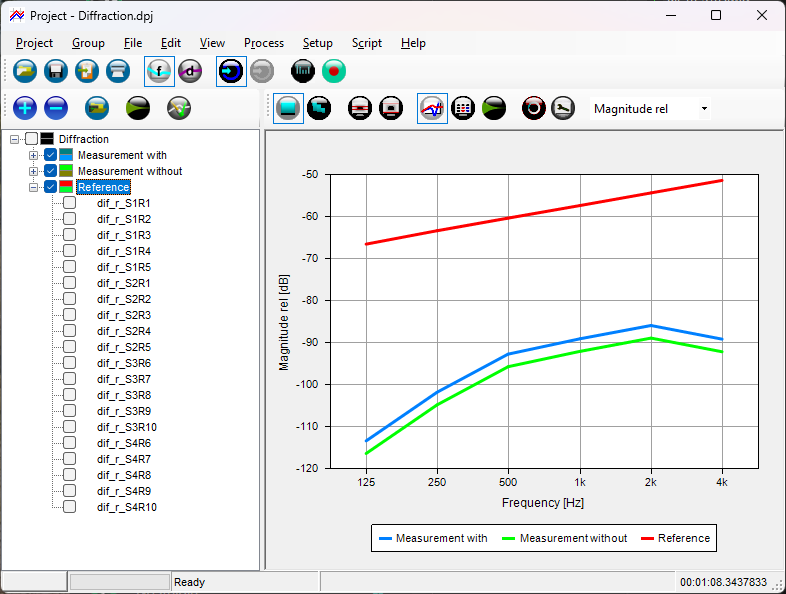
Using the Zircon dialog (Process - Zircon), 2 new groups are created - with and without the added device. You can choose between the 1793-4 and 16272-4 standards, which changes the traffic noise spectrum used in the calculation of DLΔDI. When an NRD height lower than the default 4 m is entered, DIRAC will adjust the Adrienne window length accordingly, and display the minimum valid third-octave band for the results.
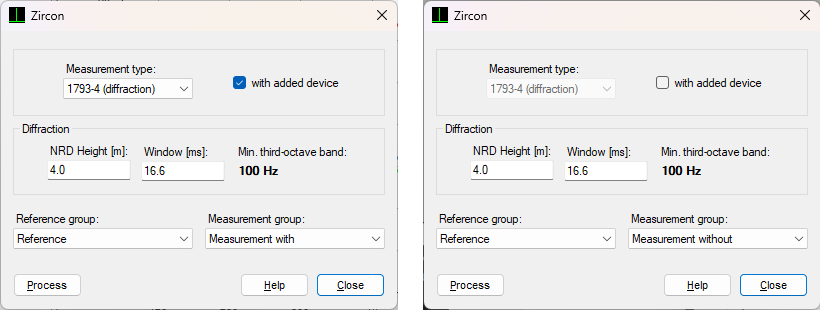
For both groups, Dirac can calculate the Diffraction Index (DI).
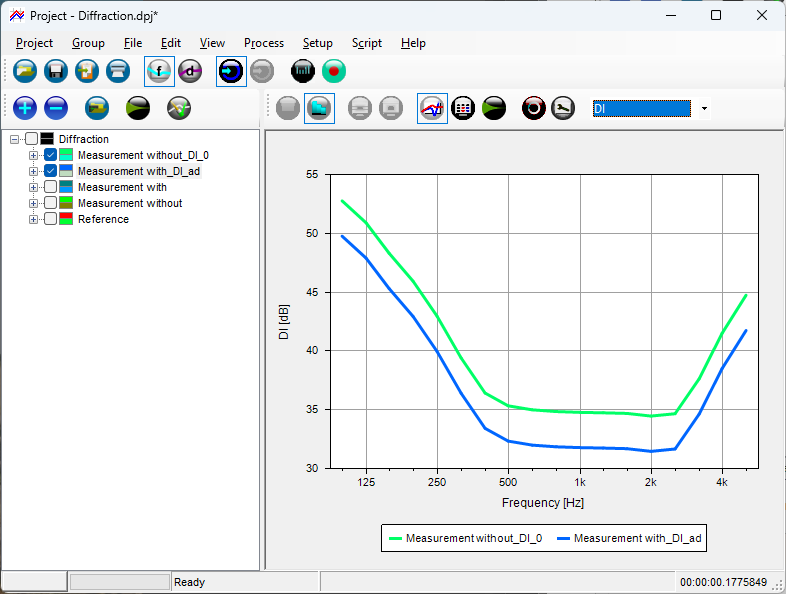
Finally, Dirac can calculated the single number rating of sound diffraction index difference DLΔDI on the project level from the (first two) selected groups. Note that DLΔDI is a parameter that can only be calculated on the project level (as opposed to the group or file level), and that the project level node needs to be checked to make the value visible.
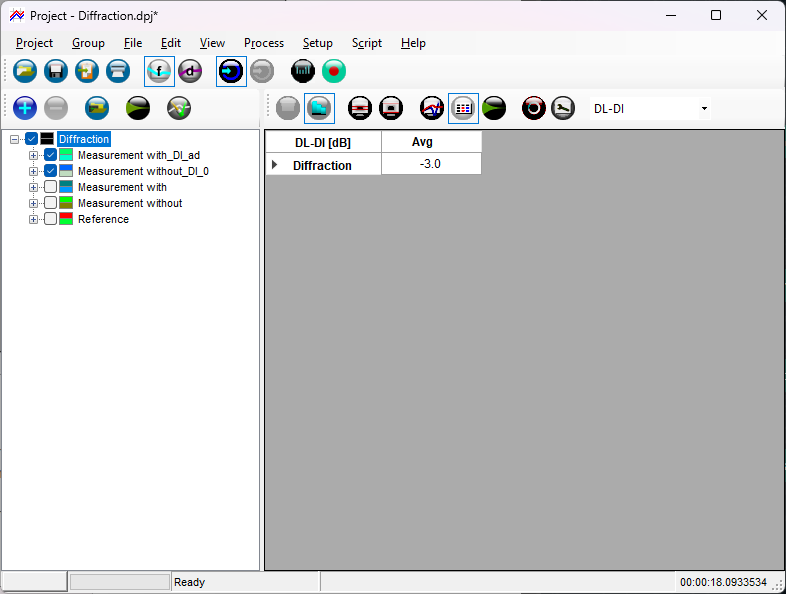
Expanded options for transmission measurements and DLSI,G
For transmission measurements following EN 1793-6 or EN 16272-6, DIRAC 7.3 can now calculate the global single number rating of the sound insulation index DLSI,G based on measurements in front of a barrier element and measurements in front of a barrier post.
The Zircon dialog for transmission measurements can now be used to specify whether a measurement was performed in front of an element or a post. The element width can also be specified, and this will be used in the weighted averaging of the DLSI of the element and post.
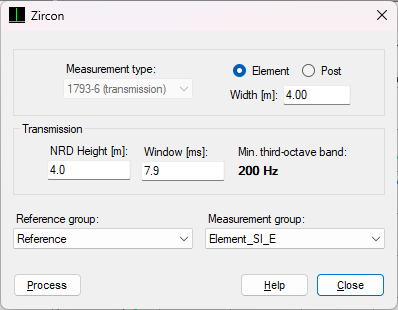
Note that the DLSI,G is a project level parameter, just like the DLΔDI. Also, the groups containing the element and post measurements need to be checked, as DIRAC will use the first two checked groups for the calculation of the DLSI,G.
Changes in reflection measurements DLRI
In DIRAC 7.3, the DLRI is no longer calculated from the average RI over all groups in the project, but from the average RI over all checked groups in the project.
